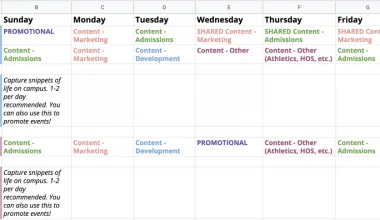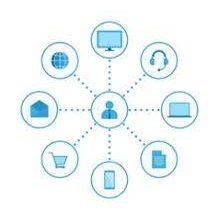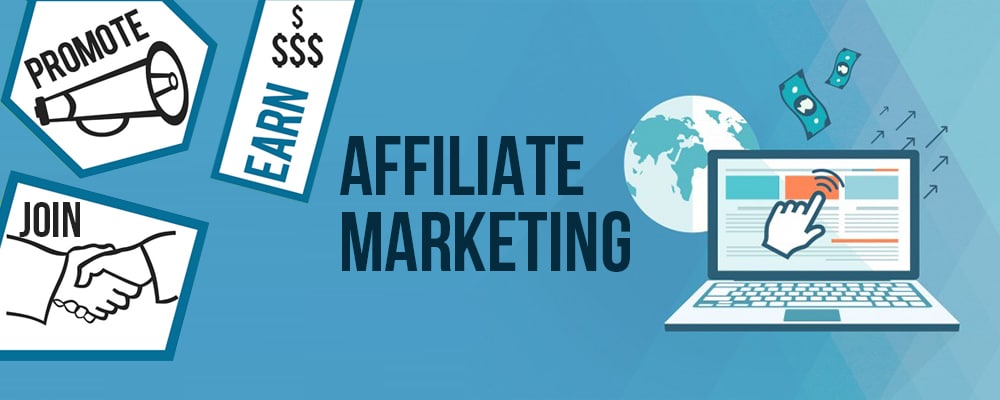Sales is an art form, and mastering it is not simple.
Resilience, tenacity, and high energy are just a few of the skills and characteristics that make for exceptional salespeople. Entrepreneurs and startup founders, for example, may need to sell some of their products or services themselves in order to get investment or new clients before they can afford to engage a specialized salesperson.
There are a few basic sales tips and techniques that, once acquired, will help anyone sell more successfully.
With this in mind, here are some helpful sales tips for both beginners and experienced salespeople.
Best Sales Tips for Beginners
Let’s start with the fundamentals. Here are five sales tips for beginners that will help you sell successfully.
#1. Know Everything There Is to Know About Your Product
It’s critical that you understand how your product works and the precise features that will help your consumers solve any problems they may have. After all, you’re the product’s spokesperson; if you don’t use it, why should anyone else?
Examine all of the accessible product demo videos and support papers. Try to understand the objective of each feature and what problem it is intended to solve.
Some basic queries for which you must deliver excellent solutions to your consumers are as follows:
- I’m having difficulty. Is there a feature in your product that can assist you to tackle this problem?
- What technology would I need to use to gain access to those features?
- To what extent may your product be customized?
- Will I be given any assistance or sales training?
- How much will this set me back?
Customers aren’t usually interested in the more technical parts of your product. They want to know how the product will make their lives easier right away. A deep understanding of the product does more than merely make you a more confident advocate for what you’re selling. It also allows you to swiftly and thoroughly map your product to your customer’s wants and get to the root of their pain concerns.
#2. Recognize the Prospect’s Pain Points
Your prospects are only interested in one thing: addressing their problems. You can only get so far by extolling the virtues of your product. What is the immediate benefit of your product to your prospect?
Ask questions during each engagement with a prospect to find their top pain issues, such as:
- Could you assist me to understand your company processes a little better?
- What are your daily objectives? Long-term objectives?
- What are your main worries and roadblocks?
- What are your hopes for the solution?
- Do you have any financial constraints?
- How much better would things be for you if you solved a specific problem? How so?
It is critical that you actively listen to the prospect’s responses. Too frequently, salespeople are so focused on pushing and selling that they forget that the finest salespeople sometimes listen more than they speak. Provide a solution that addresses the buyer’s pain points. Sales pitches are most effective when you demonstrate to prospects that you comprehend their problems and that your solution can solve them.
#3. Get to Know Your Customer in Advance
Your prospects want answers, and they expect you to offer them.
One of the best sales tips is to prepare for all meetings in advance with all of the information you may need to provide your prospects in order to convert them into clients. This entails learning as much as possible about them and their predicament. “Show them you know them,” as the expression goes.
Being well-prepared for a meeting not only indicates your skill and knowledge, but it also demonstrates that you care enough to be present and confident in all customer encounters.
Make sure you understand the following:
- What is the call’s purpose for you?
- What information do I need to obtain during the call?
- What are the advantages of my product? Weaknesses?
- On your prospect’s end, who is the decision-maker?
- If you’ve met before, where did you leave things last time?
A startling number of salespeople fail to study their prospects or prepare for calls, which weakens their efforts and leaves a negative impression on the prospect. Pre-call preparation allows you to gather the information you need to contribute value to the conversation. Developing this sales habit can instill trust in your prospects as well as confidence in your own sales abilities.
#4. Always Follow Through
If there is one thing that all sales professionals agree on, it is the necessity of the follow-up step.
It doesn’t matter if you have the best product on the market or if your meetings go well – if you don’t follow up with the prospect, the potential for a sale can slide straight through your fingers. In fact, 80% of sales necessitate at least five follow-ups.
Follow-up emails are an excellent way to stay in touch with customers following your initial encounter. It demonstrates that you care enough about their experience to check in yet allows the conversation to take place at the customer’s leisure.
Follow-up emails can be classified in several ways. Some excellent follow-up emails that professionals always send:
- Interested in connecting – Cold sales call follow-up
- It was a pleasure conversing with you earlier today… – Immediately following a meeting
- Following up on our last talk… — Next steps
- Should I remain or should I leave? — Email fragmentation
- Don’t get discouraged by a poor open rate or a lack of reaction from prospects. Be diligent in improving the quality of your emails and leads.
#5. Turn Rejection into an Advantage
There’s no simple way to say this when delivering sales tips, so let’s just get it out of the way: The two go hand in hand: sales and rejection.
Rejection is never easy, especially when you’re just starting out in sales. Competitors will occasionally swoop in and steal your lead. Some consumers do not require your product or are unable to pay the money at this time.
It’s critical to recognize that none of this is personal.
There could be hundreds of reasons why a consumer isn’t interested in what you’re selling, but the majority of them have nothing to do with you.
Rejection exposes flaws in your sales strategy. What’s the good news? You may turn your pitch’s shortcomings into strengths with the correct changes.
Each rejection helps to thicken your skin and improve your resolve, two attributes that will help you become a good salesperson.
Don’t let rejection defeat you; instead, view it as an opportunity for progress.
Read Also: How To Close a Sale: Beginner’s Guide To Sale.
Tips for Advanced Sales Reps
So you’ve mastered the fundamentals of selling, but every day on the job remains difficult. Congratulations, you’re now a salesperson!
Now, how can you take your sales game to the next level and consistently exceed your quota? There are simple sales tips you can use to keep up with the market and make the most of your time with customers.
#1. Effective Time Management
It’s no secret that time is money in sales. As a result, regard calendar blocks as the commodities that they are.
A salesperson’s life can feel like a juggling act with a dozen balls in the air. Prioritizing your time and making the most of every hour of the day is a crucial sales technique.
To be a great seller, your calendar should be the first thing you look at in the morning, the last thing you look at before bed, and something you are constantly aware of in the hours in between.
Getting caught up in a customer conversation is a big source of time waste for salespeople. While it is critical to engage with clients on a personal and cordial level, you must also know when to cut to the chase.
Spend more time finishing agreements that will generate more revenue. This is not to say that you should ignore clients that are prepared to spend less money, but it is crucial to prioritize your client list and make the best use of your time.
#2. Make Use of the Right Technology
Any consumer information a salesperson requires is now just a few clicks away, thanks to mobile devices. Using these cutting-edge tools built just for your needs is the greatest sales technique.
You can take use of some of the most powerful sales-enabling technology in the world by employing the correct tools to keep your day organized, your clients pleased, and all important information at your fingertips at all times.
Digital calendars and appointment scheduling software can help you organize your days. It’s also useful for matching your calendar to the schedules of your consumers. Industry favorites include Google Calendar and Outlook Calendar, while Calendly integration allows prospects to book meetings on whatever days and times work best for them.
One of the most time-consuming aspects of an outside sales rep’s day is time spent behind the wheel. Using the correct technology to optimize your routes will save you time and money on petrol and vehicle wear and tear.
#3. Recognize Your Prospect’s Role
There is no such thing as a “one size fits all” strategy for sales. Sometimes the individual you’re speaking with isn’t the one who has the purchasing power. Sometimes you’re talking to the CEO, who wants you to wow them with your sales pitch. And, occasionally, your customer is a regular Joe who is looking for a solid reason to spend their hard-earned money.
Do your homework before each client engagement to find out who you’ll be speaking with and where they fit in their company’s hierarchy.
#4. Never Give Up Prospecting
There is no such thing as resting on your laurels in sales.
In this line of work, complacency is never rewarded. It is critical to always have a new business on the horizon in order to have continuing success as a salesperson. The only way to accomplish this is to recruit on a regular basis.
Always be on the lookout for new business prospects, whether they come from customer referrals or your own prospecting research. You can more successfully find and engage with folks in need of your goods if you identify and understand who your customers are.
Prospecting technology is one of the most effective ways to find prospects. The internet is a goldmine of client information. One of the best sales prospecting tips, as noted above, is to use LinkedIn Sales Navigator, a fantastic prospecting tool that can provide you with a goldmine of business chances.
There’s also the traditional way. Cold phoning and emails are still effective ways to interact with prospects while also demonstrating your willingness to put in the effort to close the business.
#5. Improve Your Objection Handling
Rejection is a big part of sales, remember?
You can turn some of those rejections into successes with experience, addressing objections, and a little know-how. It only takes the appropriate attitude to any issues your clients may have.
This comes down to product expertise and understanding the intricacies of your product – both the good and the bad.
Consider your sales plan to be a game of chess. Always think three steps ahead of your consumers and predict their moves, both positive and bad. Countering these worries and directing the conversation becomes second nature if you have a plan in place for every potential objection.
Don’t wait for prospects to express concerns. Bring them up first to clear the way for the blockage. That way, you own the objection while also demonstrating that you are someone the customer can rely on to see things from their point of view.
#6. Connect with Empathy
If the customer does not trust you, they are unlikely to purchase your product.
Nobody likes to feel misled into buying something by someone who is solely interested in their money. That is why it is critical to engage with customers in a meaningful and personal way, rather than simply speaking with them.
Empathy is one of the major characteristics that distinguish excellent salespeople from great salespeople.
Sales empathy entails getting to know your consumers as if they were friends and tailoring your message to their particular personality types and concerns. It entails truly wanting to assist them and cooperating to make that happen.
The ability to put oneself in your customer’s shoes and lead them through the purchasing process is critical for building trust and loyalty. The longer and happier a customer connection is, the more fruitful it can be for both parties involved.
This is a difficult skill to teach, but it is possible to strengthen it within yourself like a muscle. It only takes practice. When dealing with consumers, forget about the money; instead, imagine yourself as two buddies, one with a problem and the other with a solution.
#7. Prioritize quality above quantity
Many people are perplexed when looking for closing sales tips: isn’t it better to have more customers rather than fewer?
What is the solution? It all depends.
Having too many balls in the air during the sales juggling performance can be intimidating and confusing. Not only may it become too much to handle, but each customer’s experience suffers as you become bogged down by a customer list that is simply too large.
It’s tempting to want to make as many sales as possible as quickly as possible in order to impress your supervisors and feel like you’ve performed well.
What is the issue? This can soon lead to burnout, as well as falling short of the sales numbers you were aiming for.
Instead, concentrate on acquiring more high-quality customers who can be counted on for continuous, steady, and dependable revenue. Schedule your days such that these consumers receive the majority of your attention.
#8. Maintain Consistency and Integrity
It’s critical that every one of your consumers receives the same high-quality pitch for your product, and that your sales strategy remains constant throughout each engagement.
Your presentation will become nearly simple if you ensure that your sales interactions are consistent and performed in a manner that demonstrates discipline and attention to your skill.
Hard labor, like most other vocations, will occasionally go you the far. At every turn, you will face strong competition. Month after month, your managers will expect results. Put up the effort, and everything else will fall into place.
If you tell a customer you’ll be there at a certain time, make sure you show up on time. If you tell a consumer that a feature will fix a problem, you must tell the truth. Because if you lose a customer’s trust, it’s gone forever. It’s a difficult thing to earn back.
If you believe something in your pitch needs to be tweaked, don’t push it off till later. The beautiful thing about sales is that you have numerous opportunities to try out new tactics. Experiment with clients to determine what works and what doesn’t, and then refine your pitch for maximum impact.
#9. Implement a Measurable, Repeatable Sales Process
Metrics are a salesperson’s best friend when applied effectively.
You can track the effectiveness of your pitch with customers by using a repeatable sales process. Then you can keep an eye on your stats and see how each minor adjustment to your method affects the broader picture.
Understanding the flow and volatility of your figures can help you determine how successful your customer contacts are and whether you should maintain the course or make adjustments to your procedure.
Determine which KPIs are most important in your specific selling circumstance and keep an eye on them as you proceed. If the metrics that are most important to you aren’t quite where you want them to be, make significant modifications with the sole objective of raising these numbers. If your statistics drop substantially, you’ll have a variety of information to identify how and why this happened, as well as what you can do to rectify it.
The finest salespeople have a core process that they employ every time they connect with a customer, but they also recognize that these processes must adapt from time to time in order to remain competitive.
#10. Look for Referrals
Despite technological developments over the last few decades, one thing hasn’t changed: word-of-mouth is still the greatest, most dependable way to contact new clients and win their business.
When a consumer suggests you to a prospect, they make an instant and trustworthy connection that money cannot buy. It is now easier than ever to engage with and acquire a new consumer.
Nothing piques a prospective customer’s interest more than positive feedback about a product that could benefit them from a peer they admire. Why shouldn’t it work for them if it worked for someone else? Referrals are essential for growing a customer base since your clients do the work for you.
Not only is it the most effective type of prospecting and promotion, but it is also free!
What are the greatest strategies for converting your top customers into referral machines? Examine your client list and examine the following:
- The duration of your partnership
- Overall customer satisfaction with your product or service
- Communication frequency between you and the customer
- How attentive is the customer?
Approach your greatest customers and ask them if they would mind suggesting you to people they know who could benefit from your product.
LinkedIn is also a terrific resource for learning about your customers’ relationships and then pursuing those connections with a referral from your customer.
Additional General Sales Tips
- If you’re experiencing a sales slump, set a couple of short, attainable targets to generate momentum and build your confidence.
- Create a “sales purpose statement” and use it to drive your decision-making process to make better, more thoughtful decisions.
- Keith Ferrazzi, author of Never Eat Alone: The Art of Eating Alone, advises that you should believe in what you sell. “You’ll never get there if you believe that all you have is your transaction — you have to produce a product that’s so incredibly wonderful that you realize you’re inviting folks into what is absolutely a lovely (and long-term) relationship.”
- Address client issues directly and demonstrate how you will improve, and then do it.
- Your sales manager can be a fantastic resource, but you must ask the proper questions (including the difficult ones, such as “Why do you think we lost this deal?”).
Set – and stick to – specific activity goals to keep yourself motivated when you’re feeling unmotivated. - Attend call reviews, advises Michael Pici, HubSpot’s director of sales. “You’re passing up a major opportunity to increase your sales success if you’re not running or attending call reviews.”
- Never stop learning: Keep your product knowledge up to date by role-playing sales calls and reading industry news.
Conclusion
Whether you’re just starting out or have been doing it for years, sales is a never-ending process that requires you to evolve in order to be competitive. Just when you think you’ve got it all figured out, developments in the industry drive you to adapt. By viewing sales as an ongoing development of your own process, you may not only survive but also succeed in one of the world’s most competitive and exciting businesses.
- SALES SECRETS: The Hidden Sales Secrets That Increase Profit
- COLD CALLING: Cold Calling Strategies 2023
- AVERAGE SALES COMMISSION RATES BY INDUSTRY: What You Should Know
- COMPENSATION PLANS FOR SALES: Best Options for Reps, Managers & Executives
- Top 5 Cold Calling Tips For Successful Sales






